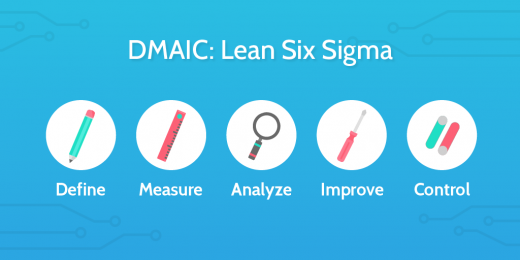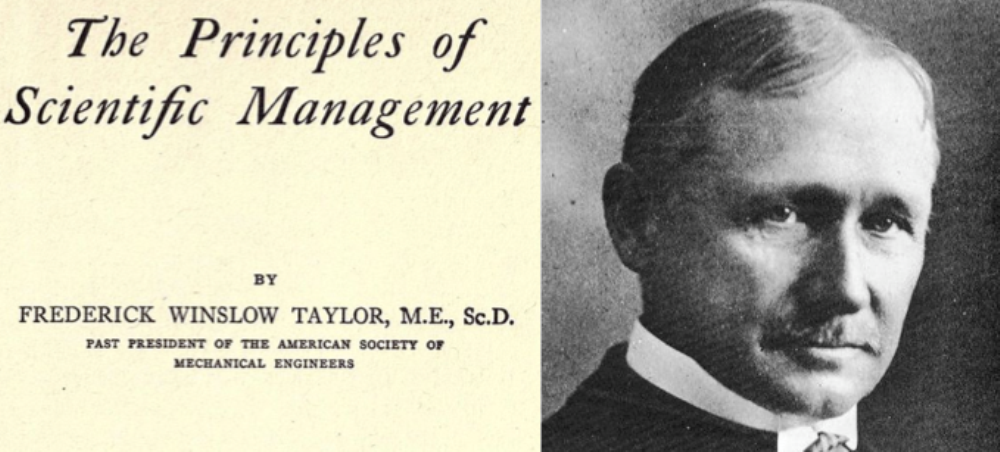Taylorism and The History of Processes: 6 Key Thinkers You Should Know
— April 16, 2018
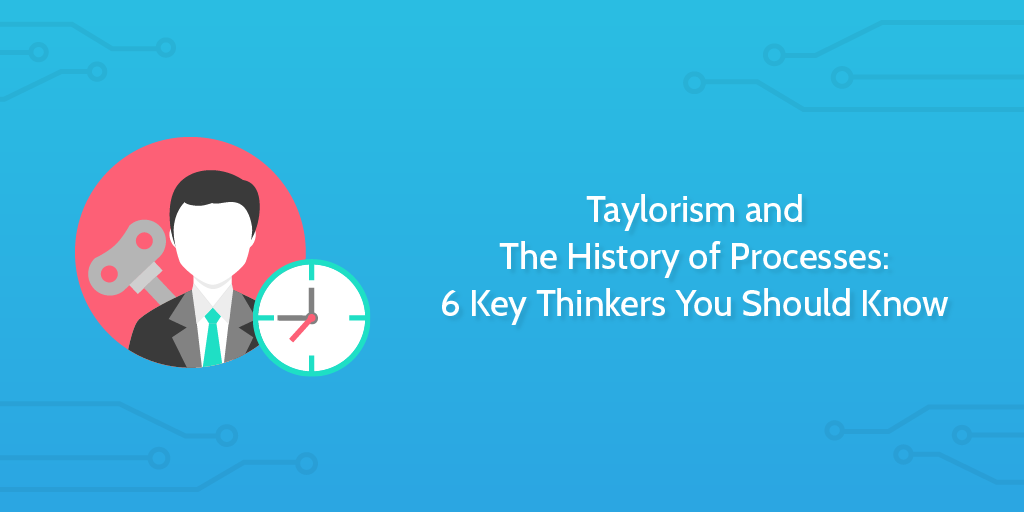
If you want to employ approaches like business process management in your business it’s best to have a solid understanding of how these theories work.
One crucial aspect of using these theories correctly is understanding their development.
It’s common for managers to want to employ cutting-edge ideas in their business, but without a deep understanding these methods can be misapplied.
These errors will reduce the effectiveness of your process management and hold your business back.
It’s not just business where process improvement efforts are regularly being undermined! In a recent meta-study from the British Medical Journal, researchers found only 2 out of 73 studies had applied the PDSA process improvement methodology in a way which fully met criteria. Commenting:
To progress the development of the science of improvement, a greater understanding of the use of improvement methods, including PDSA, is essential to draw reliable conclusions about their effectiveness.
In this Process Street article, we’re going to look at some of the fundamentals and pick out key historical thinkers whose work we can trace from in order to better inform how process improvement methods should be done. Including:
- Who is Frederick Winslow Taylor?
- What is Taylorism?
- What W. Edwards Deming can teach us about continuous improvement
- Why Taiichi Ohno helps you cut waste in your business
- What Ludwig von Bertalanffy tells us about systems
- How Bill Smith changed the way we view defects
- What Ray Dalio can show us about company culture
Who is Frederick Winslow Taylor?
Frederick Winslow Taylor was an American mechanical engineer and one of the first management consultants.
His book, The Principles of Scientific Management, was voted the most influential management book of the 20th Century by the Academy of Management in 2001.
Taylor was born in 1856 in Pennsylvania to a Princeton educated lawyer and a mother highly active in the abolitionist movement. His ancestor on his mother’s side was one of the original Mayflower pilgrims, tying Taylor neatly into the mythology of the nation.
As a teen, he turned down Harvard in favor of becoming a machinist and patternmaker. Following his apprenticeship, he gradually advanced through the ranks step by step through foreman and up to chief engineer at Midvale Steel Works.
This experience of being a shop floor worker and experiencing each rung on the hierarchy ladder no doubt helped Taylor understand the functionings of production systems in greater depth than the typical employee.
Taylor’s theories about how businesses should operate were formulated through this journey. As a foreman, he was annoyed that his laborers were not working as hard has he thought they could, so he began to measure their output and analyze his findings.
During this period he completed a degree in mechanical engineering and moved over into consulting where he would make his money through high paying gigs and developing patents. As he did so, he began to document these theories under a school of thought called Scientific Management, and Taylorism was born.
What is Taylorism?
Taylorism, often referred to as Scientific Management, was the first theory of management to focus specifically on analyzing and optimizing workflows. This makes Taylor the OG of business process management.
These theories of process optimization helped drive the Fordist shift to mass production which occurred in the early part of the 20th Century. Its focus was split between analysis and improvement. This was an attempt to replicate the scientific method in a way which could be applied to organizations.
The 4 key principles
Taylorism can be boiled down to 4 principal points:
- The method of doing a task should be informed by a scientific investigation of the task
- Employees should be selected and carefully trained for tasks
- Tasks should have detailed instructions and should be subject to supervision
- Management should evaluate tasks and formulate optimized approaches for the workers to follow
Some forms of analysis might be done by timing how long it takes a worker to do a task, others by weighing raw materials. Process analysis, for Taylor, had to look at both the minutiae of the process composition and the detail of the physical acts required to complete the process.
The elements of process improvement Taylor advocated for were successful in regards to processing materials; changing the way steel was cut and patenting that process. Yet, during his life, Taylor struggled to achieve quite the same success improving the efficiency of workers. While his disciples had more success on this front, it highlighted a key reason behind why Scientific Management lost adherents over time.
Criticisms and problems of Scientific Management
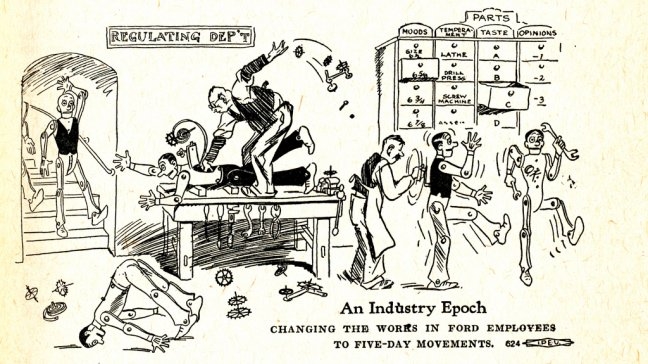
By focusing so closely on the efficiency and output of the worker, Taylor’s methods were seen to reduce the worker down to a machine by critics, with even the Italian Marxist Antonio Gramsci commenting in his Prison Notebooks that Taylorism pushes the subordination of workers and could cause revolutionary tendencies.
And Gramsci wasn’t entirely wrong as the union movement fought hard during the early stages of the 20th Century to discourage companies from employing Scientific Management in their businesses.
During one of Taylor’s consultancy projects at Watertown Arsenal, the workers were so incensed by the nature of the changes that they went on strike and an investigation was launched by a U.S. House of Representatives committee. Horace Bookwalter Drury, in the contemporary 1915 text Scientific Management: A History and Criticism, states of the result of the investigation:
General Crozier thinks that Scientific Management should even facilitate collective bargaining. (pg. 186)
This would go against the disciplinarian ethos Taylor espoused for management and proved a tough blow for Taylorism. Though, perhaps Taylor had brought it upon himself, as his rhetoric for workers was hardly inclusionary:
Now one of the very first requirements for a man who is fit to handle pig iron as a regular occupation is that he shall be so stupid and so phlegmatic that he more nearly resembles in his mental make-up the ox than any other type. (pg. 58; The Principles of Scientific Management)
As a result of these difficulties in Taylorism, we see a more clearly stated concern for the well-being of the worker in future process improvement methodologies; evident in both classic Fordist models and in Toyota Production System core practices.
The tools Taylor gave us
Despite any difficulties, Taylorism can be credited with contributing these various process improvement techniques to management thinking:
- Process analysis
- Process mapping
- Process optimization
- Standardization of best practices
- Elimination of waste
- Efficiency measures
- Mass production
- Knowledge transfer
- Documentation of processes
Taylorism is still alive and well in production processes. The lower levels of labor required now for mass production has led to the core values of Taylorism being increasingly central to modern systems.
Taylor would not have been able to imagine the forms of automation available to us today, yet this automation potential has arguably breathed new life into his classic approaches.
If you want to look into how you can incorporate automation into your business, and not just in production systems, check out our ebook: Ultimate Guide to Business Process Automation.
What W. Edwards Deming can teach us about continuous improvement

Deming was an engineer who moved into maths, making great strides forward in the new burgeoning use of statistics. However, alongside his many contributions to that field, Deming was a strong proponent of effective process improvement methods.
Like Taylor, Deming believed that the scientific method held the answer to improving the operations of organizations.
Where Taylor gives a broad overview and encourages process improvement based on efficiency increases, Deming focuses instead on the development of a theory of your own business and the importance of quality in determining what changes are positive. This continuous improvement is not simply focused on a single process but on the whole business in a holistic manner in accordance with its business goals.
The tool for which Deming is known best is called PDSA – the same approach referenced by the British Medical Journal study in the introduction. For Deming, PDSA is not just about improving processes but about running experiments on your own business.
PDSA, or the Deming Cycle, works a little something like this:
- Plan: Measure the current processes and understand a problem or potential improvement. Decide what you’re going to do to improve the process. Predict what the results should be.
- Do: Implement the changes in a controlled pilot study. Measure all variables to understand what has changed in the process.
- Study: Analyze the changes against your concept of quality. Work out what the limitations of the usefulness of the pilot study are.
- Act: Implement the changes across the rest of the relevant operations in a controlled manner. Or don’t, if you’ve found the findings are not in-keeping with your conception of quality.
You can see more about Deming in this short video below of him giving a lecture.
One of the key distinctions worth making regarding Deming is that many people confuse PDSA with PDCA, which is a watered down version of Deming’s intended theory. Deming described PDCA as a “corruption” in a letter to his colleague Ronald D. Moen.
In PDCA, a process is selected for improvement and the changes are planned and tested. But the key difference comes in the third step where the process outputs are Checked rather than studied. This is akin to a Six Sigma approach where the goal of process improvement is to reduce defects. This is a much more closed view of process improvement which focuses solely on the process itself as a closed loop rather than connecting inherently to a broader theory of quality.
Deming succinctly demonstrates this in a short line from his book The New Economics:
[On cars] Performance and style, whatever these words mean in the minds of the customers, must show constant signs of improvement. Zero defects is not sufficient.
This infographic below illustrates the difference in starting points and purpose between PDCA and PDSA.
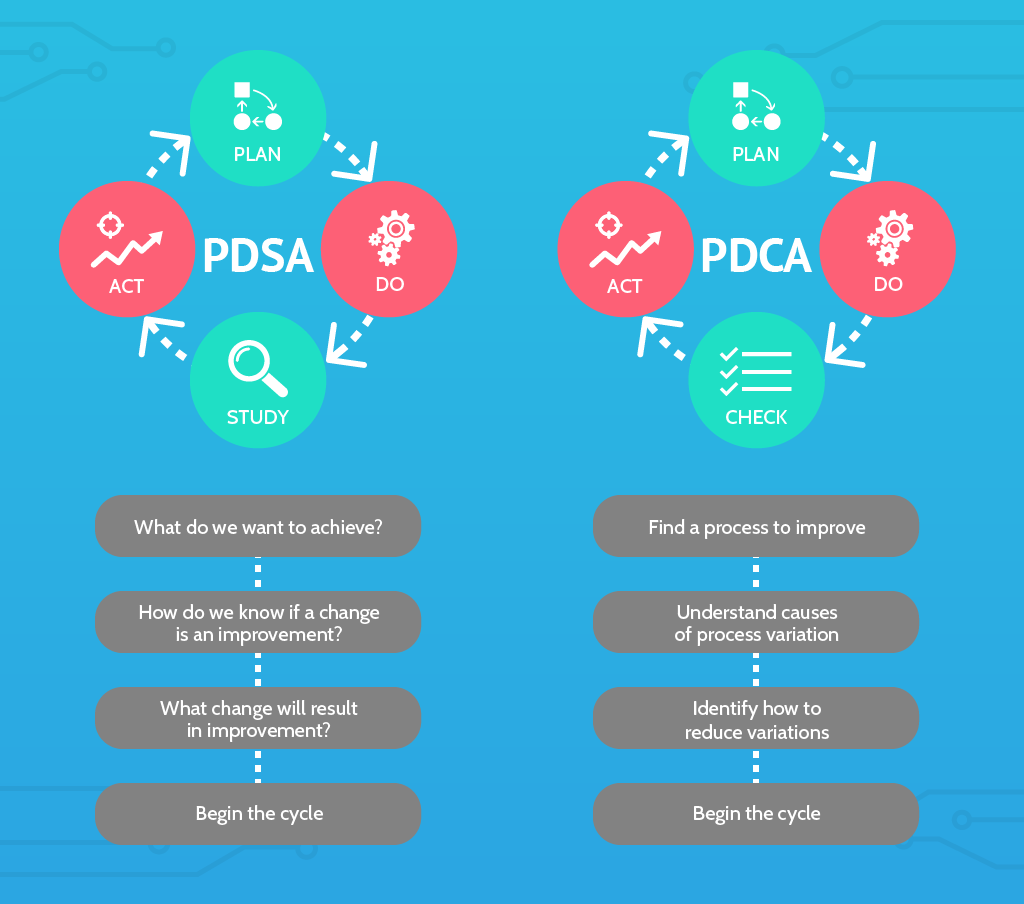
In 1950 he delivered a speech to the Hakone Convention Center in Tokyo on his concept of Statistical Product Quality Administration. The themes of this speech are:
- Having a system in place for continuous quality improvement
- Reducing defects through higher levels of quality uniformity
- Understanding what quality should mean within context
This speech is seen as a landmark moment in the development of Japanese post-war manufacturing approaches, which in turn lead to the economic miracle that established Japan as the world’s second biggest economy by 1990.
Why Taiichi Ohno helps you cut waste in your business
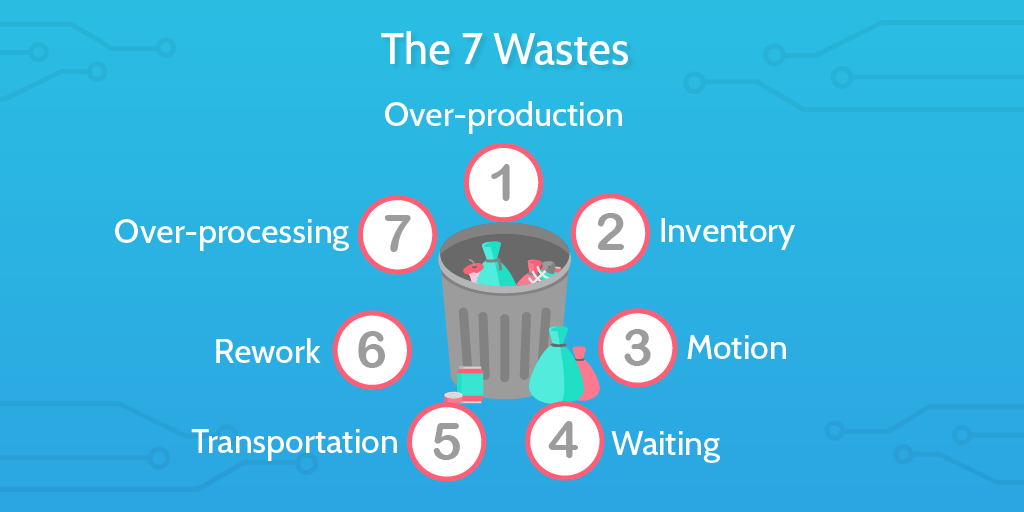
As part of this economic boom in Japan, Toyota became one of the world’s most foremost vehicle manufacturers.
With Toyota’s rise came a reputation for quickly and effectively producing quality goods at scale. This was compiled and documented as the Toyota Production System.
The Toyota Production System, or TPS, is often attributed to the work of three particular people, though many have been involved with its evolution. The three people are the founder of Toyota, his son, and the engineer Taiichi Ohno.
It is believed that Ohno can take responsibility for, specifically, Toyota’s approach to waste. Muda, as the concept is known in Japanese, refers to all the different forms of waste which can occur within a process or a system.
The goal is to eliminate as much of this waste as possible to bring about greater efficiency. There are 7 key mudas, forms of waste, to consider:
- Waste of overproduction (largest waste)
- Waste of time on hand (waiting)
- Waste of transportation
- Waste of processing itself
- Waste of stock at hand
- Waste of movement
- Waste of making defective products
You can see some of the uses of these concepts of waste in practice in this video below. The video shows the Toyota outreach team helping improve organizational practices at a food bank in New York which we featured in an article about process implementation. It provides a very clear overview of how processes can be improved with small but effective steps.
To get a full handle on Ohno’s conception of waste and how it manifests, along with a broader run through of TPS, check out his book Toyota Production System: Beyond Large-Scale Production.
When considering waste in a business setting, it is useful also to look at up-to-date attempts to add to the theory. I personally have a soft spot for the additional waste proposed by The McDonald Consulting Group.
McDonald Consulting advocate for an 8th waste: Non-used Employee Talent. This often manifests itself as underused employees in relation to their available skills. Or alternatively, having employees spend time on low value tasks which could be automated away, giving the worker greater opportunity to focus on the work they are best at. Though, I am biased considering this is one of the primary problems we at Process Street are working to help organizations with.
What Ludwig von Bertalanffy tells us about systems
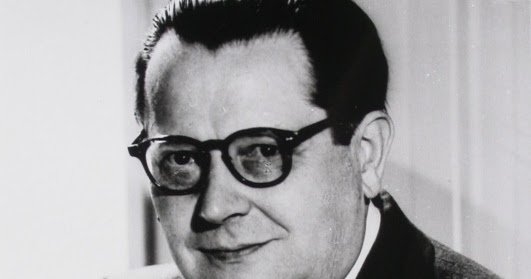
Okay, so Ludwig von Bertalanffy is a kind of weird choice here.
But bear with me.
Ludwig von Bertalanffy was an Austrian biologist and one of the founders of an approach called General Systems Theory. This approach describes systems that have various interacting components and looks at the relationships between these different dynamics.
Though hardly remembered outside his own field, Bertalanffy’s work has impacted on a huge range of disciplines and provides a framework through which interdisciplinary study can function more effectively, as well as allowing for greater nuance when looking at individual phenomena within systems.
The crucial aspect of Bertalanffy’s work which is worth his inclusion in this dream team comes in two forms:
- The use of rigorous scientific investigation in order to understand how an organization functions – a theme we have seen throughout the list.
- The adoption of a holistic viewpoint through which to view the operations of an organization; echoing sentiments expressed by Deming.
Bertalanffy’s work emphasizes holism over reductionism and organism over mechanism. This chimes with Deming’s intention to develop a working theory of an organization which you wish to improve. The difference between Deming and Bertalanffy in this sense is that Deming set out to solve a problem for businesses specifically, so adds the concept of quality to be the driving factor and the measure for what constitutes positive change.
It’s important to tie this to Deming as PDSA is a tool you can use to improve processes within systems, whereas General Systems Theory is, as described by Ervin Laszlo in the preface to the originally published book presenting the theory, not a practical set of tools:
Bertalanffy’s general system theory is a perspective or paradigm
Taking the perspective that the whole is greater than the sum of its parts allows us to think more critically about how individual aspects of business operations can knock on to other areas.
One application of General Systems Theory in practice could be found in this article on systems engineering from the International Council on Systems Engineering (INCOSE), defining their application of it as follows:
Systems Engineering is an interdisciplinary approach and means to enable the realization of successful systems. It focuses on defining customer needs and required functionality early in the development cycle, documenting requirements, then proceeding with design synthesis and system validation while considering the complete problem.
You can see the flow of their approach in the image below:

Former INCOSE president Brian Mar gives us the following considerations:
- Understand the whole problem before you try to solve it
- Translate the problem into measurable requirements
- Examine all feasible alternatives before selecting a solution
- Make sure you consider the total system life cycle. The birth to death concept extends to maintenance, replacement and decommission. If these are not considered in the other tasks, major life cycle costs can be ignored.
- Make sure to test the total system before delivering it.
- Document everything.
How Bill Smith changed the way we view defects
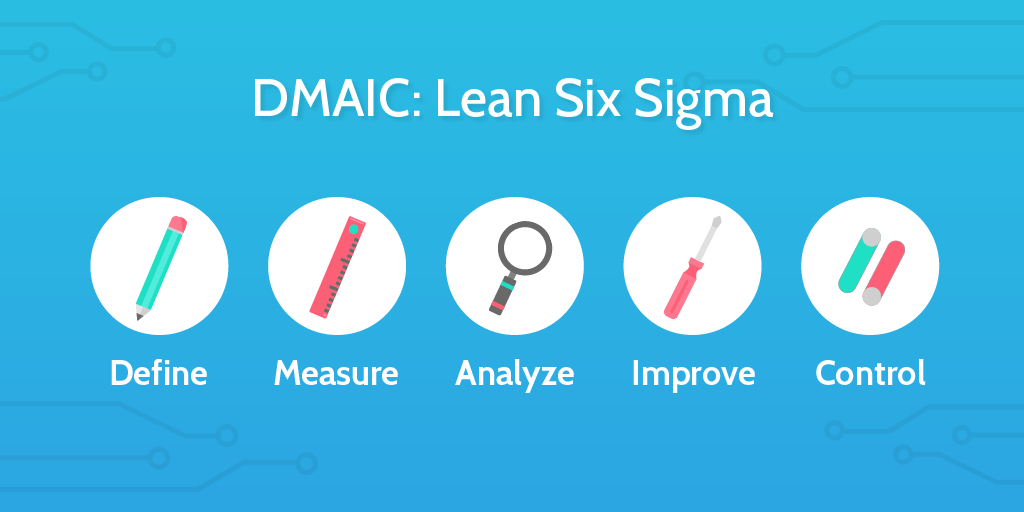 Unlike the others on the list, Smith isn’t a celebrated academic with countless books for you to read.
Unlike the others on the list, Smith isn’t a celebrated academic with countless books for you to read.
Smith was more on the front lines doing the unglamorous work. Yet, I couldn’t go through this list without mentioning Six Sigma, and Smith is typically seen to be the principal founder.
If you want books about Six Sigma, the next best person to look to would be Jack Welch who brought Six Sigma to General Electric in 1995 and has been an evangelist for the process improvement method ever since.
Smith was tasked with improving quality within Motorola and sought to improve the processes which cause things to go wrong. Specifically looking to reduce what we might refer to as defects.
In this endeavor, the Six Sigma approach was born. The goal is to be able to measure your processes and assign them a sigma based on how mature the process is; how many defects occur per million.
The goal is to have a process which scores a rating of six sigma. When a process reaches this point you would expect 99.99966% of process occurrences to be defect free.
Six Sigma specifically deals with fighting poor manufacturing processes, but can be used across a range of business use cases. The main versions of Six Sigma as a functional tool for operations are DMAIC and DMADV, sometimes called DFSS.
The DMAIC process stands for:
- Define
- Measure
- Analyze
- Improve
- Control
In many ways, Six Sigma is the ultimate expansion on the PDCA approach often misattributed to Deming – the one he called a “corruption”. Yet, Six Sigma has proven hugely popular has been a key part of many manufacturing processes for the past 2 decades. Its continued success is echoed by now having an official standard drawn up for conducting the DMAIC process.
The particular SOP in question is the ISO 13053-1:2011.
What Ray Dalio can show us about company culture
The most recent of all the inclusions on the list, Ray Dalio feels worth including here for 2 key reasons:
- He discusses what comes before processes; identifying an even smaller constituent part.
- He emphasizes the role of company culture heavily.
Though coming at an approach to processes from a slightly different angle than some voices above, Dalio’s professional experiences reinforce the notion that there is value in taking a holistic approach to your company processes.
Born in Queens in New York to a jazz musician father, Dalio went into finance through fairly normal and traditional means. It appears the boho upbringing affected him in different ways than teenage rebellion.
After having success at a range of financial institutions Dalio set up his own investment firm: Bridgewater Associates.
In a previous article on how a hedge fund works, I dipped into the processes within his business as revealed through his text Principles. These principles not only made a successful business but turned this one man show into arguably the largest hedge fund in the world.
And it was all built on principles. For Dalio, the principles you consciously choose to follow will then impact on the processes you choose to make. This happens to all of us. But choosing those principles yourself lets you analyze them and be even more critical toward your processes.
His book Principles is a very useful read for thinking about the role the unconscious plays in developing systems, along with a whole range of extra useful information.
Deep understanding will help you make the right choices
The consistent theme running throughout this article appears to be the role of an evidence-based scientific analysis to inform the development of your organizational processes.
Different thinkers are going about it in different ways, with different goals.
Yet, there is a reason why processes and workflows have become increasingly data based and specialized: it’s because it works.
Understanding the background to these competing theories, understanding their individual benefits, and keeping on top of modern discussions of them will give you an advantage over the rest.
You’ve seen my list. What about yours? Who else do you think deserves to be on this list of key characters? Let me know in the comments below!
Business & Finance Articles on Business 2 Community
(176)

